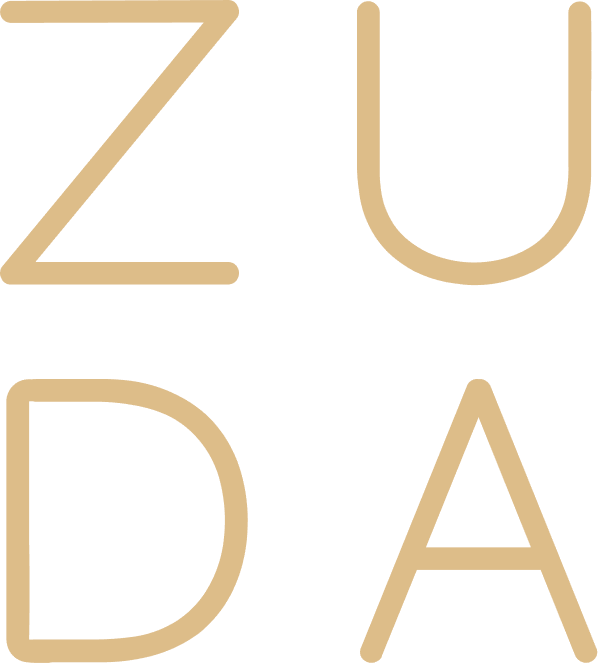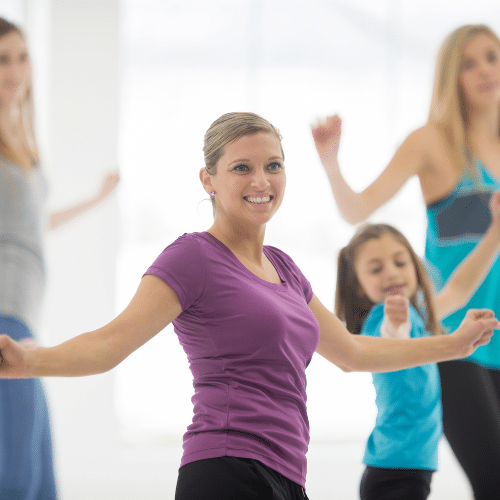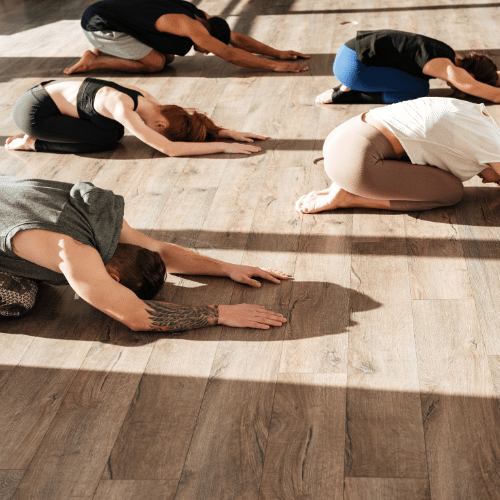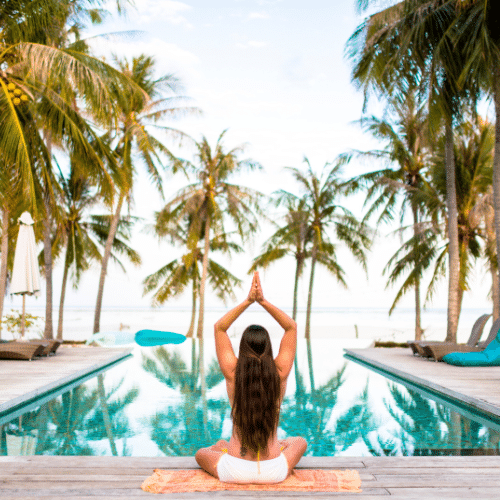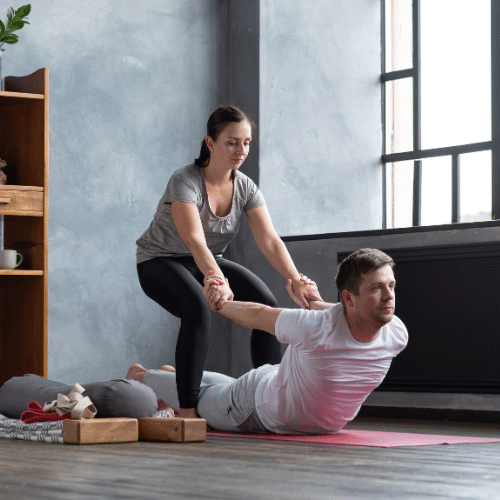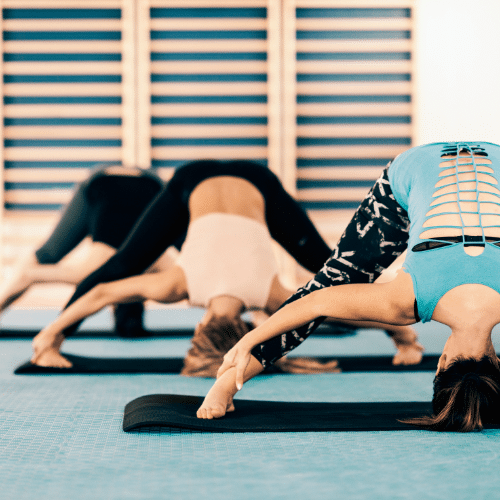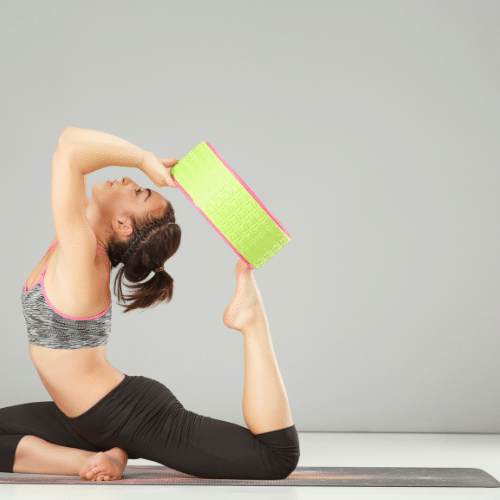Introduction
Yoga is often viewed as a holistic practice that combines physical postures, breathing exercises, and meditation to promote overall wellbeing. However, there is a common misconception that yoga is only suitable for individuals with a certain body type or fitness level. This misconception can create barriers for many people who may feel excluded from participating in this ancient practice.
The purpose of this post is to dispel these myths and show how yoga is accessible to everyone, regardless of their age, body size, ethnicity, or physical abilities. By highlighting the inclusivity of yoga, we hope to encourage readers to explore the practice and its benefits for all individuals. Whether you are a beginner or an experienced yogi, there is a place for you on the yoga mat. Let’s dive into the world of yoga and discover how it can be a transformative and enriching practice for everyone.
The Universal Appeal of Yoga
Yoga is a practice that can be enjoyed by individuals of all ages. From children to seniors, yoga can be adapted to suit the needs and abilities of different age groups. For children, yoga can be a fun and interactive way to improve flexibility, strength, and concentration. For seniors, yoga offers gentle movements and mindfulness practices to maintain mobility and improve balance.
Furthermore, yoga’s versatility makes it accessible to individuals with various physical conditions and health concerns. Whether someone is recovering from an injury or living with a chronic illness, there are modified poses and techniques that can be tailored to their specific needs. Additionally, the mental and emotional benefits of yoga are universal. Practicing yoga has been shown to reduce stress, anxiety, and depression, while improving focus, clarity, and overall well-being.
The inclusive nature of yoga means that everyone can experience its transformative benefits, regardless of age, physical abilities, or health status. By embracing yoga’s universal appeal, individuals can find a practice that meets them where they are and supports their journey towards holistic health and wellness.
Types of Yoga for Every Body
Yoga is a practice that can benefit people of all ages, body types, and physical abilities. There are several different styles of yoga, each with their own unique benefits.
Hatha yoga is a gentle, slower-paced practice that is great for beginners and those looking to focus on basic postures and breathing techniques. Vinyasa yoga, on the other hand, is more dynamic and flowing, focusing on linking movement with breath.
Yin yoga is a deeply relaxing and meditative practice that involves holding passive stretches for extended periods of time, while Restorative yoga is all about relaxation and rejuvenation, using props to support the body in restful poses.
One of the great things about yoga is that it can be modified to suit individuals with different needs. For those with limited mobility or recovering from injuries, props like blocks, straps, and bolsters can be used to help support and modify poses. Additionally, many yoga instructors are trained to offer variations and modifications to accommodate different ability levels.
No matter your age, fitness level or physical ability, there is a style of yoga that can be tailored to meet your needs and provide a multitude of benefits for body, mind, and spirit.
Getting Started with Yoga: Tips for Beginners
Yoga is a beautiful practice that is truly for everyone, regardless of age, gender, body type, or physical ability. If you’re new to yoga, it’s important to find a class and instructor that make you feel comfortable and supported. Look for beginner-friendly classes that focus on proper alignment and provide modifications for different abilities.
When starting your yoga journey, it’s crucial to listen to your body and practice self-compassion. Yoga is not about achieving the perfect pose, but about the journey of self-discovery and self-improvement. Start with basic poses like downward dog, child’s pose, and mountain pose, and gradually work your way up to more complex poses as you feel ready.
Remember to breathe deeply and stay present during your practice. Don’t compare yourself to others, and don’t be discouraged if you can’t do certain poses right away. With time and dedication, you will build strength, flexibility, and inner peace through your yoga practice. Most importantly, enjoy the process and the journey of self-exploration that yoga offers.
Making Yoga Accessible: Props and Adaptations
Yoga is for everyone, regardless of age, ability, or body type. Props such as blocks, straps, and cushions play a crucial role in making yoga more accessible for individuals with varying needs and abilities. Blocks can be used to bring the ground closer to the hands in standing poses, while straps can help reach and hold onto a foot in seated poses. Cushions can provide support and comfort in seated or reclining postures. These props allow individuals to modify poses according to their body’s unique limitations or needs.
For example, someone with limited flexibility or mobility may use a block to support themselves in a standing forward fold, while someone with a knee injury may use a cushion to minimize pressure on the joints in seated poses.
By making these adaptations, individuals of all backgrounds and abilities can experience the physical, mental, and emotional benefits of yoga. It is important to create an inclusive environment where everyone feels welcome and supported in their practice. Yoga is truly for every body, and with the use of props and adaptations, everyone can find a way to benefit from the practice.
Success Stories: Yoga for Everybody
Title: Success Stories: Yoga for Everybody
Introduction:
Yoga is for everyone, regardless of age, ability, or background. Inclusivity is at the heart of the yoga community, and the benefits of yoga are truly for everybody. Here are some inspiring success stories that illustrate just how diverse and inclusive the practice of yoga can be.
1. Case Study – Maria: Maria, a wheelchair user, found renewed strength and inner peace through yoga. Despite her physical limitations, she was able to adapt poses and movements to suit her abilities, and she found a sense of empowerment and freedom on the mat.
2. Success Story – Ahmed: Ahmed, a busy single father, discovered the transformative power of yoga in managing stress and anxiety. Through regular practice, he found a new sense of calm and balance that positively impacted all aspects of his life.
3. Testimonial – Jamie: Jamie, a plus-size yoga practitioner, embraced her body and gained confidence through yoga. She found a supportive and inclusive community within the yoga world, and she now advocates for body positivity and self-love through her practice.
Conclusion:
These success stories demonstrate that yoga truly is for everybody. The diverse and inclusive nature of the yoga community allows individuals from all walks of life to experience the physical, mental, and emotional benefits of the practice. It’s a reminder that yoga is a powerful tool for personal growth and transformation, accessible to all.
Resources to Begin Your Yoga Journey
If you’re ready to embark on your yoga journey, there are plenty of resources available to help you get started. Online resources such as YogaGlo and Yoga International offer a wide range of classes for beginners, allowing you to practice from the comfort of your own home. You can also explore apps like Down Dog and Glo, which provide customizable yoga sessions to suit your needs and preferences.
For those who prefer the feel of a physical studio, there are countless local yoga studios that offer beginner-friendly classes. Look for studios that prioritize inclusivity and diversity, as these spaces are more likely to cater to a wide range of individuals and abilities.
If you prefer to learn through reading, consider picking up a book such as “The Heart of Yoga” by T.K.V. Desikachar or “Yoga for Everyone” by Dianne Bondy. These resources provide valuable insight into the philosophy and practice of yoga, helping you deepen your understanding as you begin your journey.
Ultimately, the best resource for you will depend on your personal goals and preferences. Whether you choose to practice online, in a studio, or through reading, remember that yoga is a personal journey and there’s no one-size-fits-all approach. Take the time to explore different resources and find what resonates with you.
Conclusion
Conclusion:
In conclusion, yoga is a practice that promotes inclusivity and offers countless benefits for individuals of all backgrounds and abilities. It is not just for a specific age group, body type, or level of flexibility. By embracing the diverse range of yoga styles and modifications available, everyone can find a practice that suits their needs and preferences.
We encourage you to approach yoga with an open mind and explore its potential benefits for yourself. Whether you are looking to increase flexibility, build strength, reduce stress, or simply find a sense of peace and balance, yoga has something to offer everyone.
We invite you to share your own experiences with yoga or to start your yoga journey today. Try a beginner’s class, experiment with different styles, or practice at home with online tutorials. The most important thing is to give it a try and see how it can positively impact your life.
We believe that everyone can benefit from the practice of yoga and we hope that you will take the first step towards exploring its inclusive and transformative nature.
